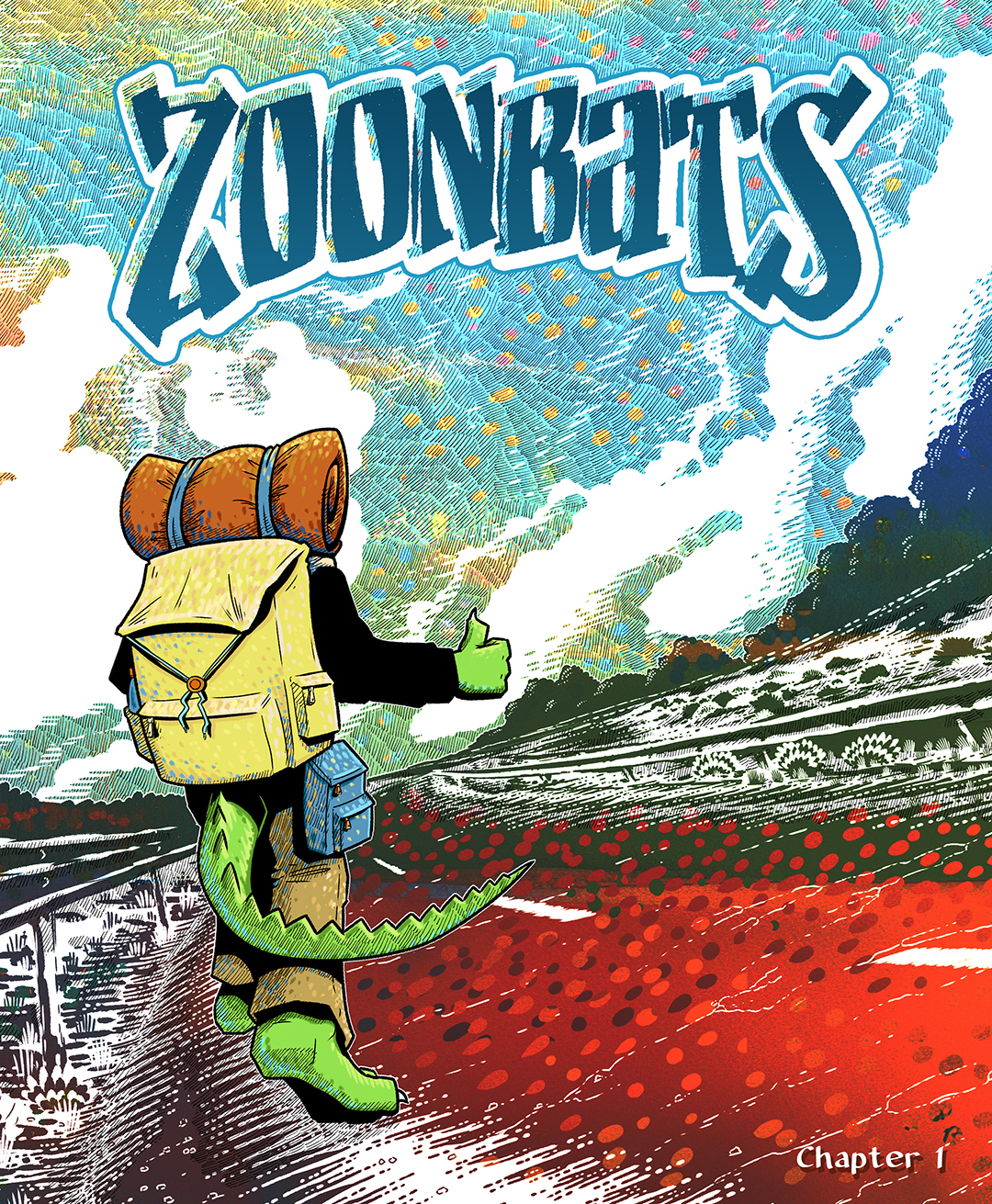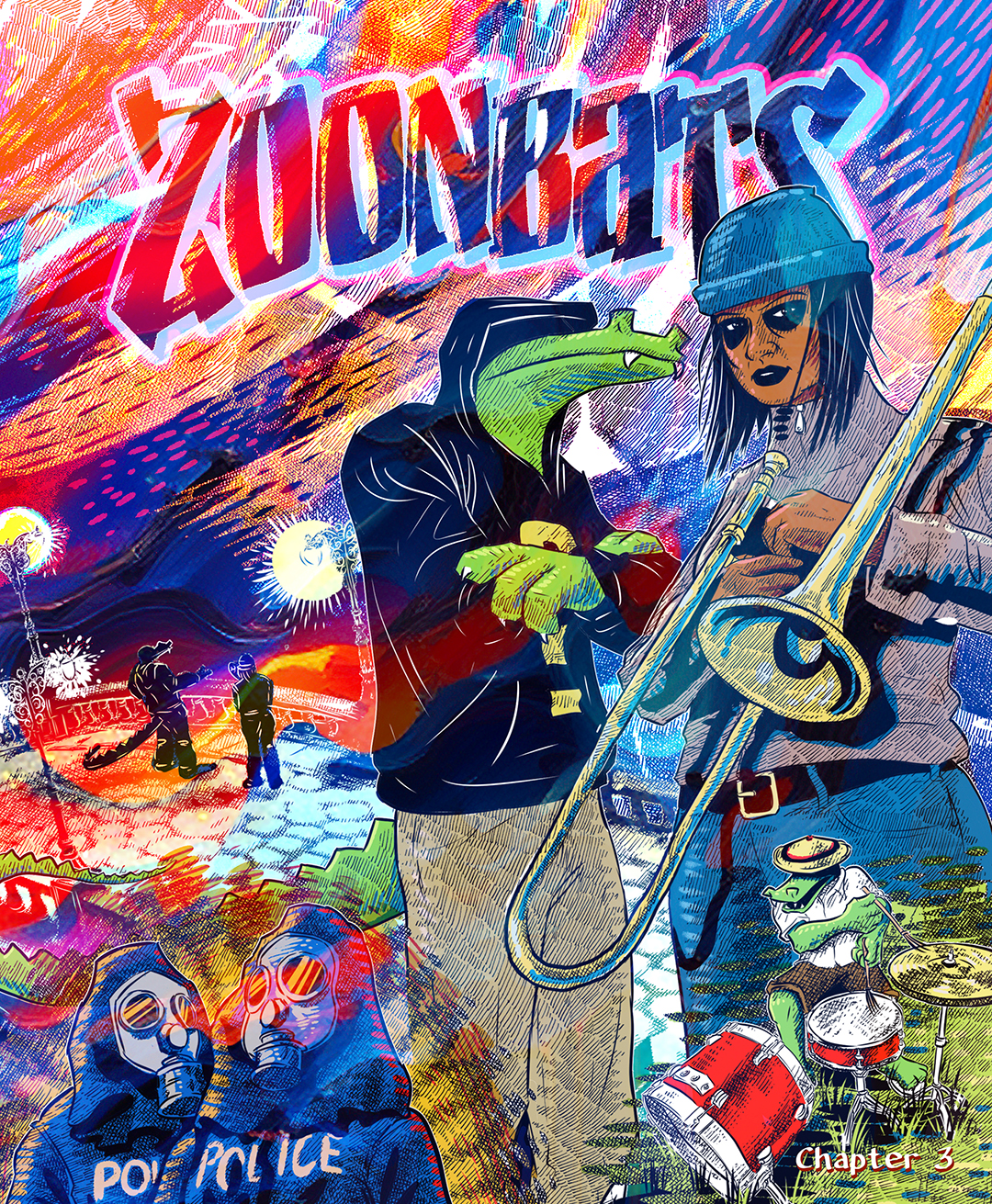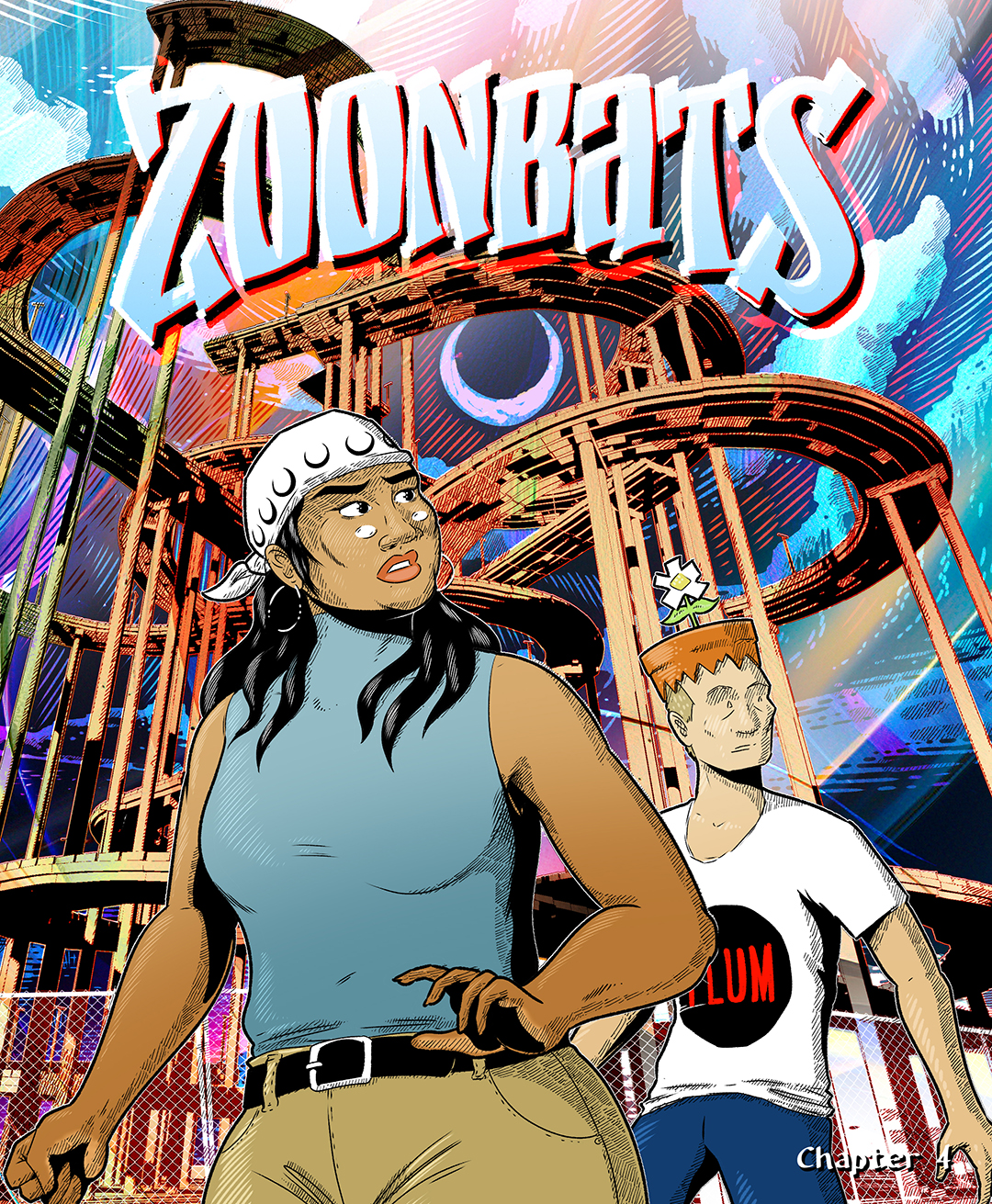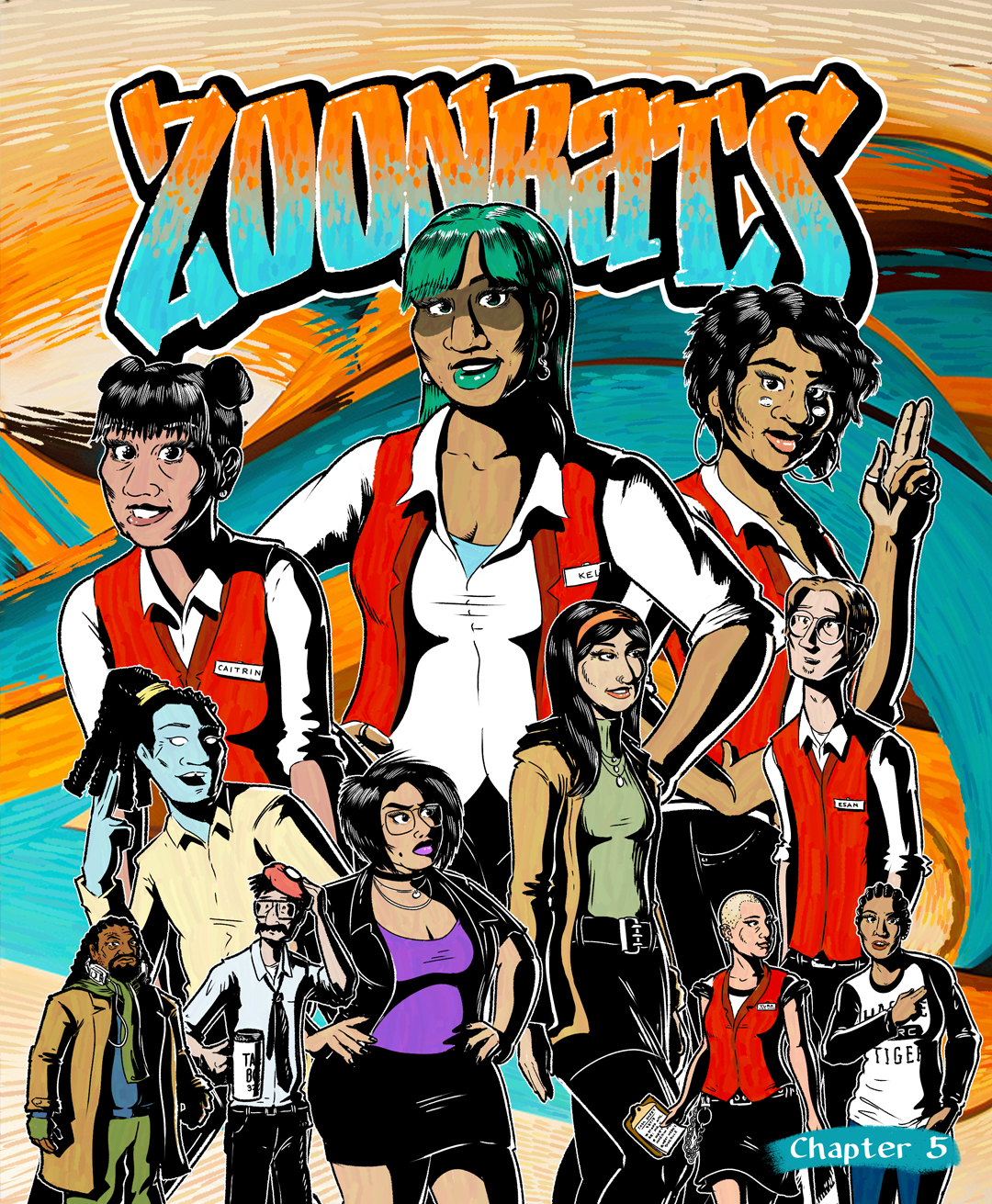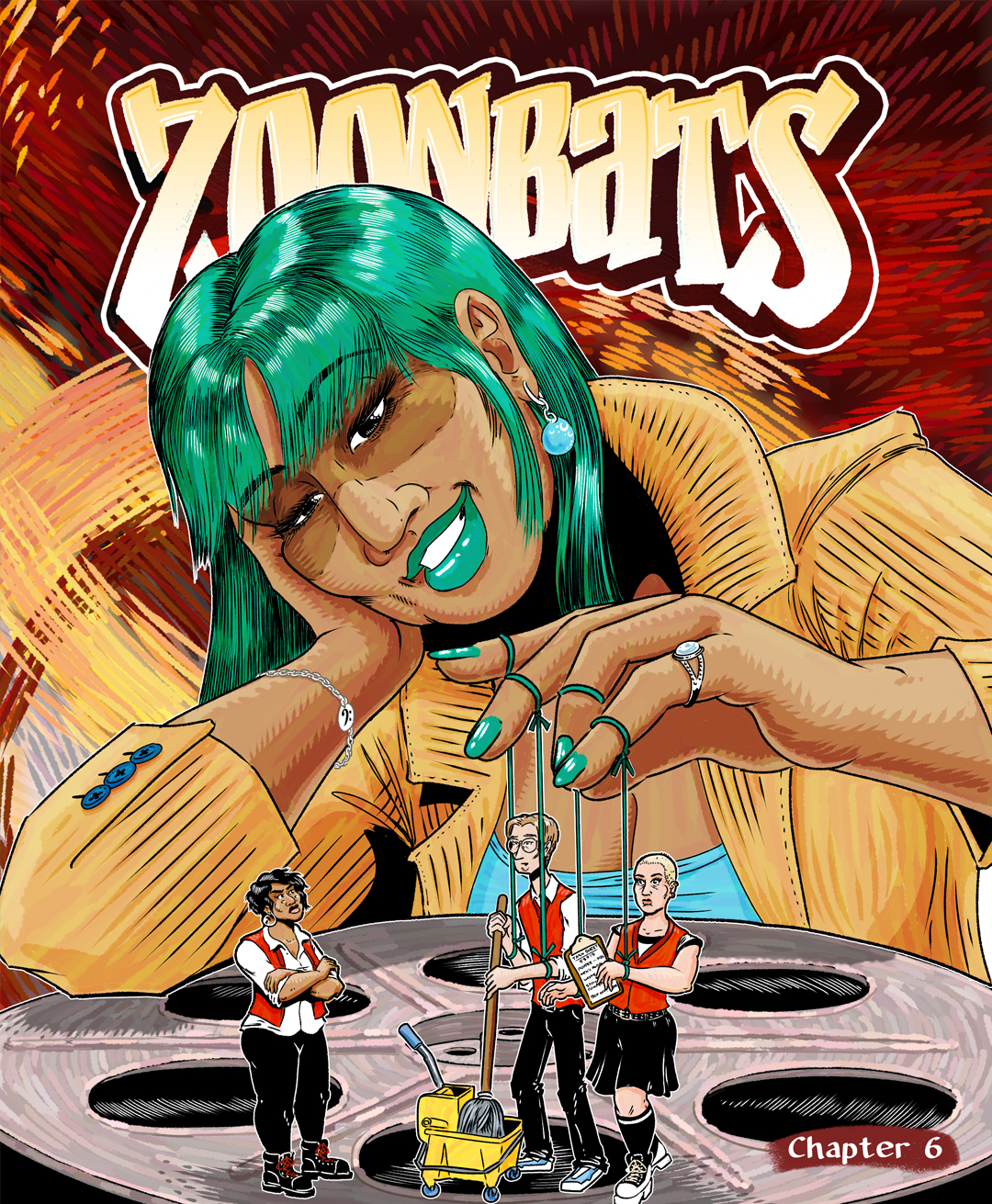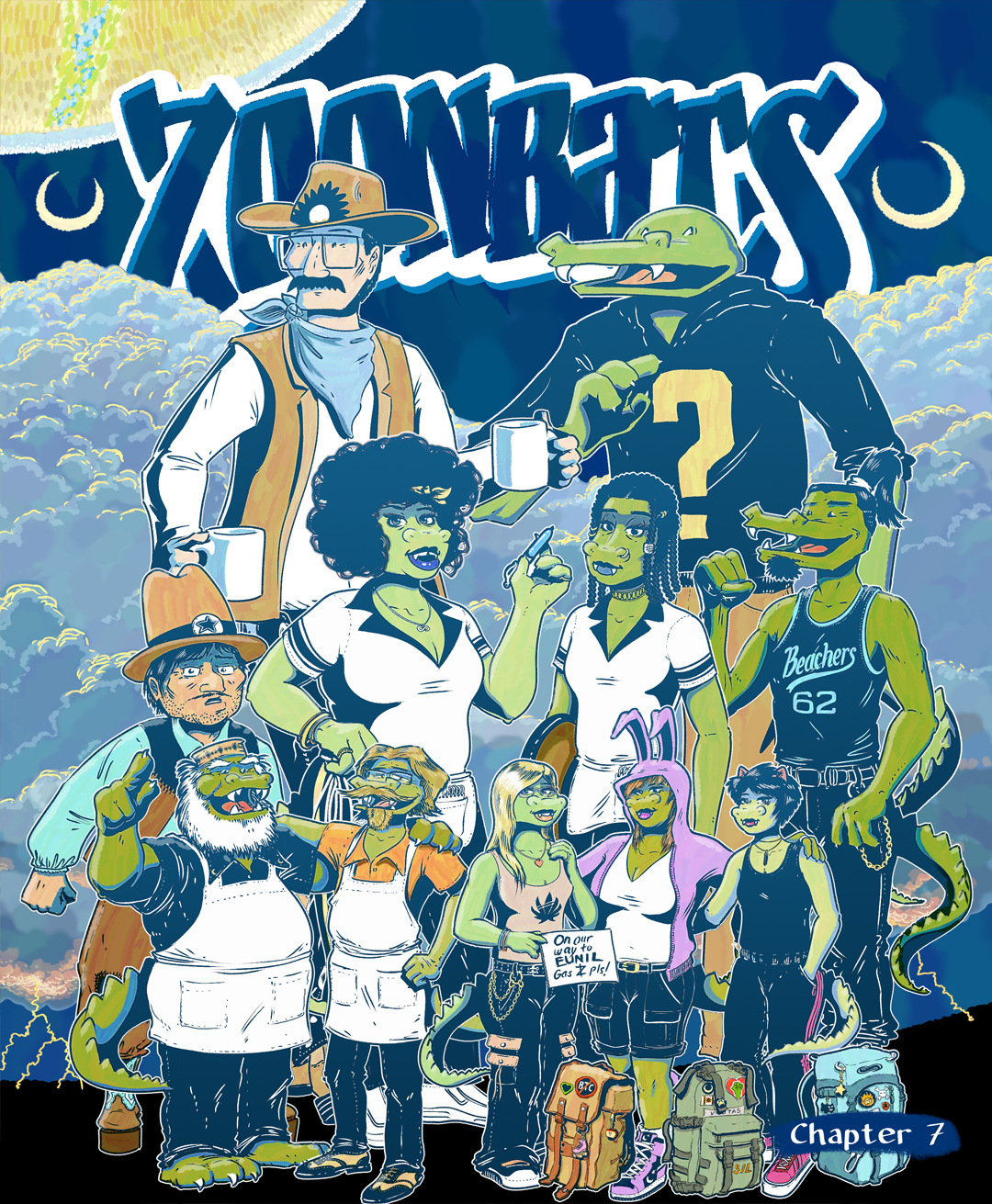
Urban fantasy sci-fi road trip comics by Giles O'Dell.
A group of working-class artists, bound by shared struggle and restless ambition, set out on a journey—swapping tall tales, dodging trouble, and stumbling into the absurd—until they begin to unravel the hidden machinery of oppression shaping their world. As their awareness of the bigger picture awakens, so does their will to fight back.
Zoonbats is a sci-fi/urban fantasy road trip adventure set on an alien moon that’s just a little too familiar for comfort.
